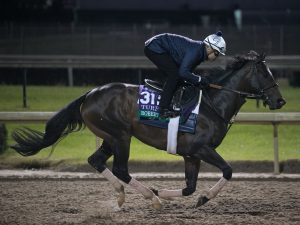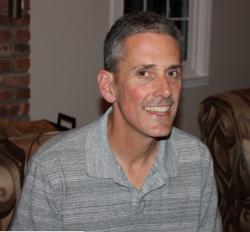By John Furgele

Robert Bruce
Horse racing means different things to different people. For some, just going to the track and trying to a pick a few winners will do just fine. Others, looking for a huge score, bet exotics, wheel the favorites, and do a deep dive into the most lucrative wagers. Still others head to the races just to socialize.
The diversity of race-goers is on full display during the boutique meets at Saratoga Race Course and Del Mar. Not everyone in the crowds of 40,000 is a die-hard racing fan; these tracks make being there an event in itself. Big events are popular in the states: the Super Bowl, the Daytona 500 and Indianapolis 500, The Masters, and the College Football Championships routinely draw the biggest crowds in the U.S.
I’ve always been drawn to the big race with the big purse. To me, any race that offers a purse of at least $100,000 deserves attention. In most cases, the larger the purse, the more attention the race receives. Exceptions, of course, include the Kentucky Derby, the Preakness and the Belmont Stakes. They could run the Derby for $50,000 and there would still be a full field of 20, along with a crowd of 140,000 packed into Churchill Downs and millions of people tuning in around the world.
A watershed moment in racing occurred in 1981 when the operators of Arlington Park in suburban Chicago came up with the idea for the Arlington Million. It was the first thoroughbred race in North America to offer a total purse of $1 million (the Meadowlands Pace ran for $1 million in 1980). And, they chose to run the Million on the turf. That figure was 15 years ahead of its time. The Derby, Preakness and Belmont didn’t hit the $1 million threshold until 1996, 1997, and 1998, respectively.
The inaugural Million, contested at 1 ¼ miles, proved to be a fitting platform for the first winner, the great John Henry and his Hall of Fame jockey, Bill Shoemaker. The thrilling finish saw John Henry win by a nose over 40-1 long shot The Bart in a photo finish before a crowd of just over 30,000. An estimated 50 million watched the race on TV.
The premise of offering a super payday to attract the best horses and jockeys, then sell it to racing fans and generate a nice handle was ahead of its time. Since its inception (outside of Nevada) in the 1970’s, off-track betting was negatively impacting horse racing by making it too easy to stay away from the venues. Arlington Park officials wanted people to come to the track to watch, wager and party, just as they had done in prior decades.
NBC carried the Million live at the start, and three years later, 1984, the Breeders’ Cup was born. Did the Arlington Million serve as a catalyst for the Cup? It may be a bit of stretch to say so, but it does warrant some credit, because it proved that a new event offering lots of money could grab the public’s attention.
The race has had its share of adversity, including a two-year break in 1998 and 1999. In 1985, a fire destroyed most of the grandstand, but the Million was run 25 days later with 35,651 in attendance — a tribute to its perseverance.
If you follow horse racing, the words “Arlington Million” resonate. Today, it serves as a “Win and You’re In” for the Breeders’ Cup. In 1981, those words caught both the eye and ear. A horse race? For a million bucks? This I have to see. And here we are, decades later, waiting for the 37th edition.
It’s a race many trainers, jockeys and owners covet. Some of the legendary names in horse racing have succeeded on the turf in suburban Illinois. Six jockeys have two Million victories: Gary Stevens, Ramon Dominguez, Cash Asmussen, Jose Santos, Laffit Pincay, Jr., and Jerry Bailey. Hall of Famers Charlie Whittingham and Ron McAnally, along with Chad Brown, lead the trainers with three wins apiece.
Robert Bruce, who won last year’s Million, will attempt to become the first horse to win the race two years in a row. He is trained by Brown, who also is set to send out expected favorite Bricks and Mortar. The only horse with two wins in the Million is John Henry, who three years after winning the inaugural race, won it again in 1984 in what would be his final year of racing.
The Arlington Million is not the richest horse race in the land these days, but it was the original and because of that, still commands attention.
Saturday’s Arlington Million Day features five stakes races, four on the turf:
$75,000 Bruce D, 3-year olds, 1 mile, Tapeta
$100,000 Pucker Up (G3), 3-year old fillies, 1 1/8 miles, turf
$500,000 Secretariat (G1), 3-year olds, I mile, turf
$600,000 Beverly D (G1), 3-year olds and up, fillies and mares, 1 1/16 miles, turf
Arlington Million (G1), 3-year olds and up, 1 ¼ miles, turf

As a kid growing up in the Buffalo suburbs in the 1970s and 80s, the radio was one of John Furgele’s best friends. In the evenings, he used to listen to a show on WBEN radio called “Free Form Sports,” hosted by Buffalo broadcast legend Stan Barron. The show ran weeknights from 6 to 11 pm and featured every kind of sport you could imagine. One minute, Mr. Barron was interviewing a Buffalo Sabres player; the next, he was giving high school field hockey scores.
But there was always one thing that caught John’s ear. During those five hours, Barron would give the results from Western New York’s two harness racing tracks — Buffalo Raceway and Batavia Downs. This is where John learned what exactas, quinellas, trifectas and daily doubles were all about. From then on, he always paid attention to harness racing, and when Niatross (a legendary Western New York horse) hit the scene in 1979, his interest began to blossom.
John believes harness racing is a sport that has the potential to grow and he will explore ways to get that done via marketing, promotion and, above all, the races themselves.
When he’s not watching races, John is busy with his family and his job in sales. Like the pacers and trotters, he does a little running himself and you’ll occasionally find him “going to post” in a local 5K race.


